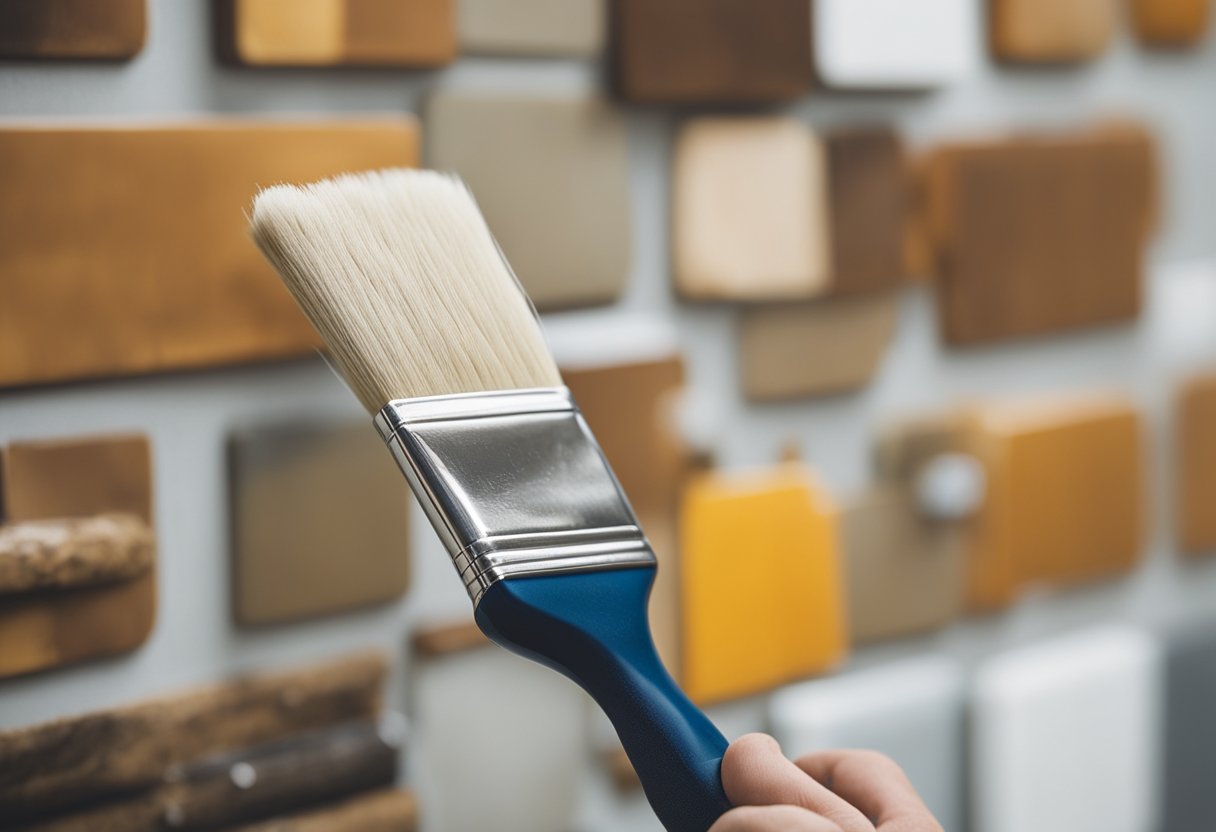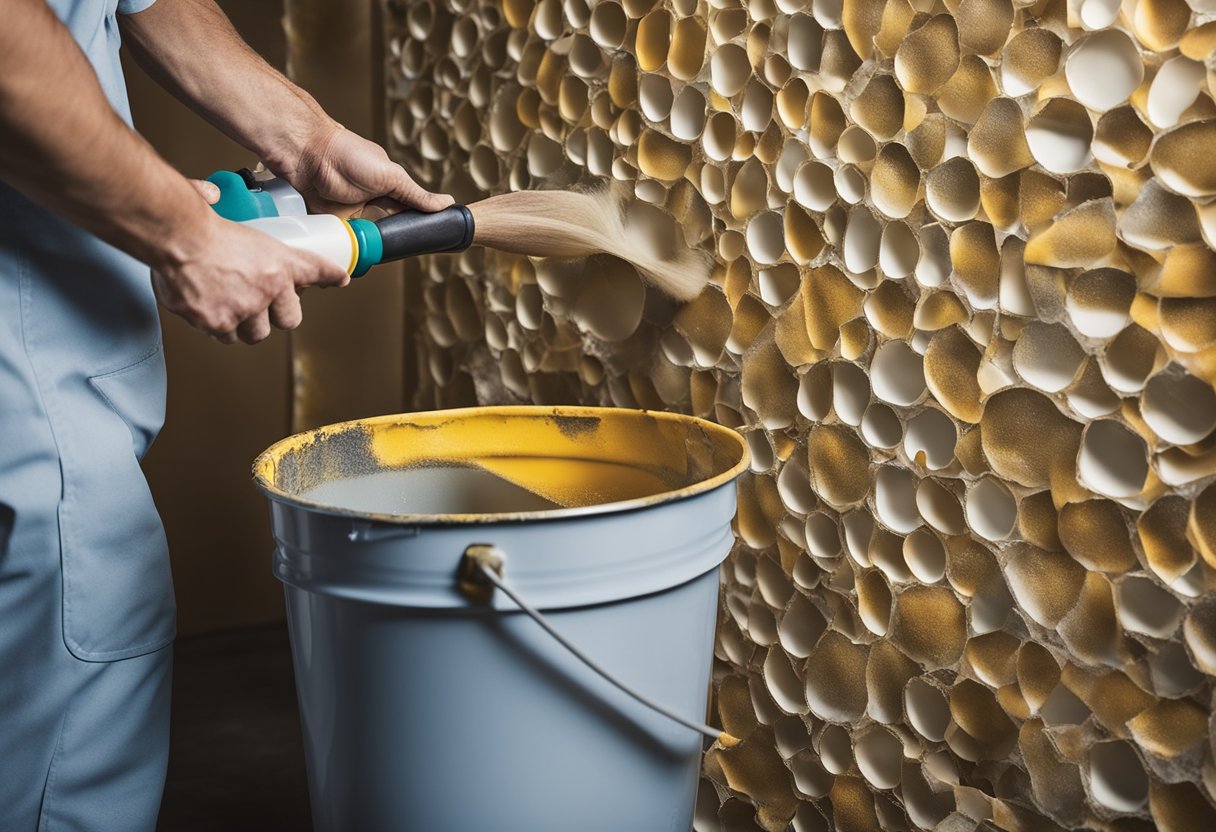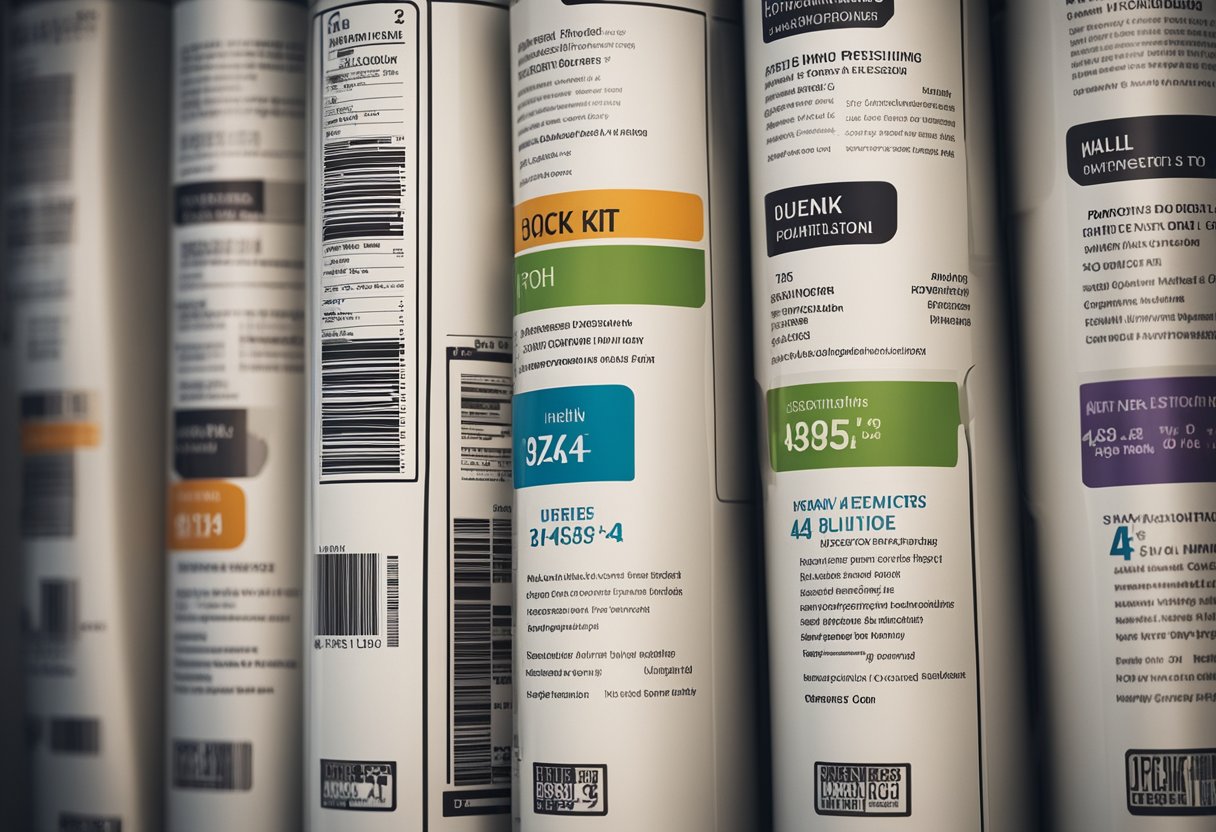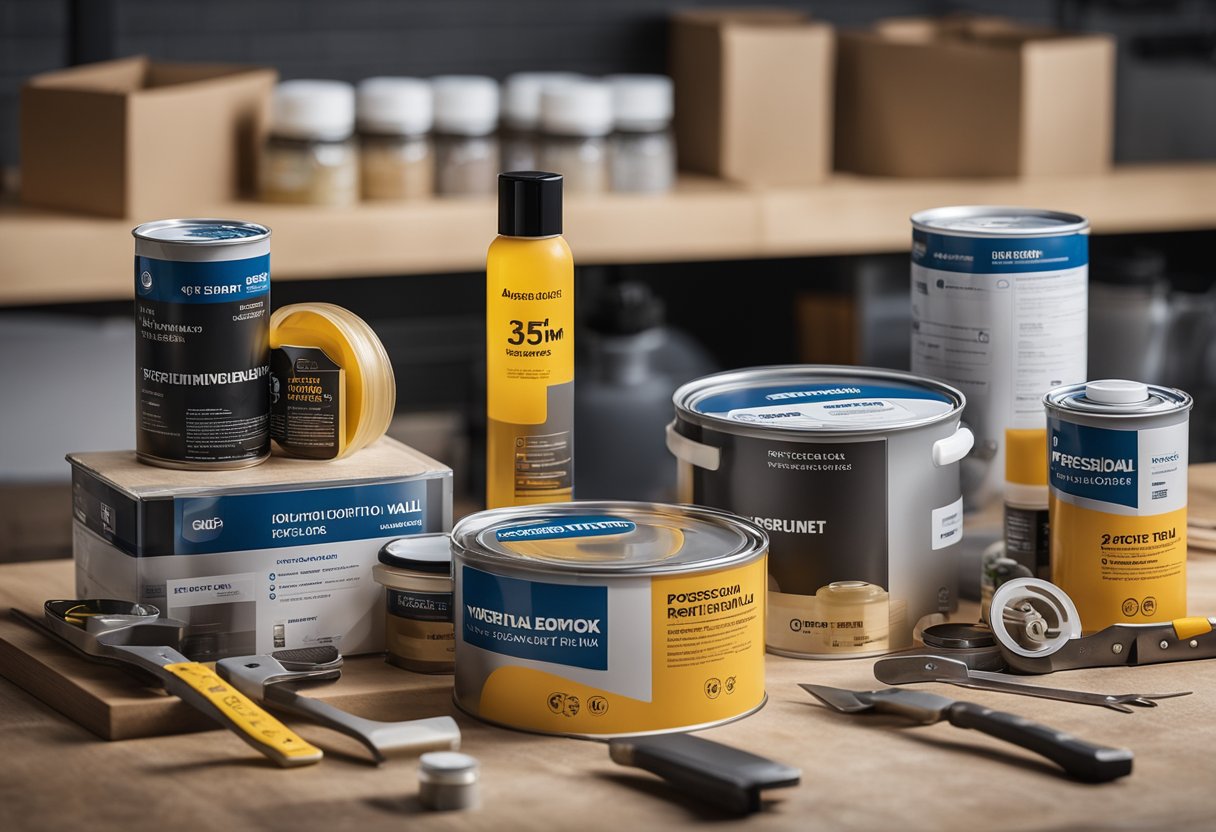Vertical wall epoxy kits are a popular solution for those looking to add a durable and attractive coating to their walls. These kits come with everything you need to apply a high-quality epoxy coating to your walls, including the epoxy resin, hardener, and any necessary tools. They are available in a variety of colors and finishes to suit any style or preference.
Understanding Vertical Wall Epoxy Kits is essential before you begin your project. These kits are designed to provide a long-lasting, durable coating that can withstand harsh conditions and resist damage from moisture, chemicals, and other environmental factors. They are ideal for use in areas that are prone to wear and tear, such as garages, workshops, and industrial spaces.
When preparing to apply a vertical wall epoxy kit, it is essential to follow the manufacturer’s instructions carefully. This includes properly cleaning and preparing the surface, mixing the epoxy resin and hardener according to the instructions, and applying the coating evenly and smoothly. With proper preparation and application, a vertical wall epoxy kit can provide a high-quality, long-lasting finish that will protect your walls and enhance the appearance of your space.
Key Takeaways
- Vertical wall epoxy kits are a popular solution for those looking to add a durable and attractive coating to their walls.
- Understanding Vertical Wall Epoxy Kits is essential before you begin your project.
- Proper preparation and application are crucial to achieving a high-quality, long-lasting finish with a vertical wall epoxy kit.
Understanding Vertical Wall Epoxy Kits
As someone who has used vertical wall epoxy kits before, I can confidently say that they are an excellent choice for anyone looking to coat their wall surfaces. These kits are specifically designed for vertical applications and provide a durable, long-lasting coating for your walls.
One of the key benefits of vertical wall epoxy kits is that they come in a variety of colors and gloss levels. This allows you to choose a finish that matches your aesthetic preferences and the needs of your space. Some kits even offer low odor and water-based options, making them a great choice for those who are sensitive to strong smells or want an eco-friendly product.
When it comes to application, vertical wall epoxy kits are straightforward and easy to use. They typically come in quart or gallon kits, and some even offer 1-gallon kits. This makes it easy to determine how much product you need for your project.
Vertical wall epoxy kits can also be used on a variety of wall surfaces, including concrete, drywall, and plaster. They are versatile and can be used in both residential and commercial settings.
It’s important to note that not all vertical wall epoxy kits are created equal. Some kits may be made with emulsion products or urethanes, while others may be 100% solids epoxy or solvent-based. It’s important to choose a kit that meets your specific needs and requirements.
Overall, vertical wall epoxy kits are an excellent choice for anyone looking to coat their wall surfaces. They are easy to use, come in a variety of colors and gloss levels, and can be used on a variety of wall surfaces.
Preparation and Application
https://www.youtube.com/watch?v=fzBL-yqJLck&embed=true
When using a vertical wall epoxy kit, proper preparation of the substrate is crucial to achieve the desired results. For concrete surfaces, it is important to ensure that the surface is clean, dry, and free of any contaminants such as oil, grease, or other debris. New concrete surfaces should be allowed to cure for at least 28 days before applying the epoxy coating.
Before mixing the epoxy, it is important to read the manufacturer’s instructions carefully and ensure that all required safety equipment is used. Mixing the two components of the epoxy should be done thoroughly to ensure that the product cures properly. It is recommended to use a mechanical mixer to ensure that the components are mixed evenly.
When applying the epoxy, it is important to use a professional grade roller to ensure even coverage. The roller should be suitable for use with 100% solids epoxy and have a nap of at least 3/8 inch. In some cases, mechanical scarification may be necessary to ensure proper adhesion of the epoxy to the substrate.
Surface cleaning is also an important step in the preparation process. Any contaminants on the surface can negatively affect the adhesion of the epoxy. A suitable primer and vapor barrier may also be necessary to ensure proper adhesion and prevent moisture from penetrating the surface.
Overall, proper preparation and application of a vertical wall epoxy kit is crucial to achieve the desired results. Following the manufacturer’s instructions carefully and using the appropriate safety equipment can help ensure a successful installation.
Product Specifications and Limitations
I would like to share some important product specifications and limitations of the Vertical Wall Epoxy Kit. This information will help you understand the capabilities and limitations of the product and ensure that you achieve the best possible results.
Physical Properties
The Vertical Wall Epoxy is a two-component water-based epoxy coating that exhibits excellent chemical resistance and abrasion resistance rivaling solvent-based products. It can be applied up to 8 mils per coat (4 mils DFT) without sagging, making it ideal for vertical applications. The product comes pre-packaged by weight, and kits should be mixed in their entirety to ensure proper mixing.
Mixing and Application
Mixing the Vertical Wall Epoxy kit is easy and straightforward. The kit includes all the necessary components, including the self-priming 2-part industrial epoxy vertical primer, 100% solids high build ArmorUltra vertical epoxy, power mixers (for your drill), mixing bucket with liner, 18″ industrial roller frames, 18″ epoxy roller covers, complete instructions, and full, unlimited free telephone support.
The Vertical Wall Epoxy kit should be applied at a substrate temperature of 50°F to 90°F (10°C to 32°C) and a humidity level of less than 85%. The dew point should be at least 5°F (3°C) above the substrate temperature to prevent moisture from condensing on the surface.
Coverage and Thickness
The Vertical Wall Epoxy kit has a coverage rate of approximately 100-125 square feet per gallon per coat. The thickness of the coating should be between 4-8 mils per coat, depending on the application. Multiple coats may be required to achieve the desired thickness.
Topcoating and Priming
The Vertical Wall Epoxy kit does not require a topcoat, but it can be topcoated with a compatible coating if desired. The substrate must be clean and free of any contaminants before applying the primer and epoxy coating. A primer may be required for some substrates to ensure proper adhesion.
Limitations and Restrictions
The Vertical Wall Epoxy kit has some limitations and restrictions that should be considered before use. It should not be applied at temperatures below 50°F or above 90°F. The substrate temperature should be at least 5°F above the dew point to prevent moisture from condensing on the surface. The kit should be mixed in its entirety, and the mix ratio should not be altered. The Vertical Wall Epoxy kit is not recommended for use in areas with high humidity or where water exposure is frequent or prolonged.
Product Failure and Storage
Product failure can occur if the Vertical Wall Epoxy kit is not applied according to the instructions or if the substrate is not properly prepared. The product should be stored in a cool, dry place and used within the recommended shelf life.
In summary, the Vertical Wall Epoxy kit is a high-quality, water-based epoxy coating that exhibits excellent chemical resistance and abrasion resistance. It is easy to mix and apply, and it can be used for vertical applications up to 8 mils per coat without sagging. However, it is important to follow the instructions carefully and consider the product’s limitations and restrictions to achieve the best possible results.
Handling and Safety Measures
https://www.youtube.com/watch?v=yArcPF0c_UM&embed=true
When working with vertical wall epoxy kits, it is important to take the necessary handling and safety measures to avoid any potential hazards. Here are some important points to keep in mind:
Safety Data Sheet
Before starting any project, it is important to read the safety data sheet (SDS) provided by the manufacturer. The SDS contains important information about the product, including its physical and chemical properties, potential hazards, and recommended safety measures. Make sure to follow the instructions provided in the SDS to ensure safe handling and use of the product.
Technical Data Sheet
In addition to the SDS, it is also important to read the technical data sheet (TDS) provided by the manufacturer. The TDS contains information about the product’s properties, recommended application methods, and other technical information. Make sure to follow the instructions provided in the TDS to ensure proper application of the product.
Jiffy Mixer
When mixing the epoxy, it is recommended to use a Jiffy mixer or similar style drill mixer to ensure proper mixing. This will help to ensure that the epoxy is thoroughly mixed and applied evenly.
Solvents
Avoid using solvents or other chemicals in the vicinity of the epoxy. Solvents can react with the epoxy and cause it to cure improperly or become damaged. It is also important to avoid using solvents to clean tools or equipment that have come into contact with the epoxy.
Environmental Conditions
The curing time of the epoxy can be affected by environmental conditions such as temperature and humidity. Make sure to follow the manufacturer’s recommendations for curing time and environmental conditions to ensure proper curing of the epoxy.
Sodium Vapor Lighting
When working with epoxy, it is important to avoid using sodium vapor lighting. Sodium vapor lighting can cause the epoxy to appear yellow or brown, which can affect the final appearance of the project.
By following these handling and safety measures, you can ensure safe and proper use of vertical wall epoxy kits.
Recoating and Topcoating
https://www.youtube.com/watch?v=tV6qyPsl1Es&embed=true
When it comes to vertical wall epoxy coating, recoating or topcoating is an important consideration. Recoating refers to the application of a new layer of coating over an existing layer, while topcoating refers to the application of a protective layer over the coating to enhance its durability and longevity.
Most epoxy coatings require a recoat or topcoat to ensure maximum protection and longevity. However, the exact recoat or topcoat interval will depend on the specific type of coating and the manufacturer’s recommendations. It is essential to follow the manufacturer’s guidelines to ensure the coating’s performance and warranty.
Cleanup is also a crucial step before recoating or topcoating. Any surface contaminants, such as dirt, grease, or oil, must be removed before applying a new layer of coating. This ensures proper adhesion and a smooth, even finish.
It is important to note that warranties and liabilities may be affected by improper recoating or topcoating. If the manufacturer’s guidelines are not followed, the warranty may be voided, and the manufacturer may not be liable for any damages or defects.
In conclusion, recoating or topcoating is an important step in maintaining the durability and longevity of vertical wall epoxy coating. It is crucial to follow the manufacturer’s guidelines, ensure proper cleanup, and be aware of any warranties or liabilities.
Product Performance and Durability
https://www.youtube.com/watch?v=MduyvmL1aZ4&embed=true
When it comes to vertical wall epoxy kits, performance and durability are two of the most important factors to consider. I have personally used several epoxy kits and found that the E100V Vertical Wall Epoxy and ArmorPoxy Wall Coatings are two of the best options available in the market.
One of the most important aspects of any epoxy kit is its chemical resistance. Both the E100V Vertical Wall Epoxy and ArmorPoxy Wall Coatings provide excellent chemical resistance, making them ideal for use in industrial settings. Additionally, both kits feature slow speed mixing equipment, which ensures that the epoxy is thoroughly mixed before application.
Another important factor to consider is the pot life of the epoxy. The E100V Vertical Wall Epoxy has a pot life of approximately 45 minutes, while the ArmorPoxy Wall Coatings have a pot life of approximately 60 minutes. This gives users ample time to apply the epoxy before it begins to harden.
Color stability is also an important consideration, especially for those who want their walls to maintain their appearance over time. Both the E100V Vertical Wall Epoxy and ArmorPoxy Wall Coatings are available in a wide range of colors, and they both feature excellent color stability.
It is important to note that both kits come with a disclaimer of warranties, so users should read the instructions carefully before use. However, in my experience, both the E100V Vertical Wall Epoxy and ArmorPoxy Wall Coatings have excellent abrasion resistance and can withstand wear and tear over time.
Overall, if you are looking for a high-quality vertical wall epoxy kit that provides excellent performance and durability, I would highly recommend the E100V Vertical Wall Epoxy and ArmorPoxy Wall Coatings.
Understanding Product Variants
When it comes to vertical wall epoxy kits, there are several product variants available in the market. It is important to understand the differences between them to make an informed decision. Here are some of the most common product variants and their features:
100% Solids Epoxy
One of the most popular types of vertical wall epoxy is the 100% solids epoxy. This type of epoxy is known for its high durability, chemical resistance, and abrasion resistance. It is ideal for heavy-duty applications and can be used on a variety of surfaces, including concrete, wood, and masonry. However, it is important to note that 100% solids epoxy can be difficult to apply and requires a lot of preparation work.
Water-Based Epoxy
Another type of epoxy that is gaining popularity is the water-based epoxy. This type of epoxy is low odor and easy to apply, making it ideal for DIY projects. It is also UV color stable, meaning it will not fade or discolor over time. However, water-based epoxy is not as durable as 100% solids epoxy and is not recommended for heavy-duty applications.
Low Odor Epoxy
If you are sensitive to strong odors, then low odor epoxy is the way to go. This type of epoxy is specially formulated to have a low odor, making it ideal for indoor applications. It is also available in both 100% solids and water-based variants.
Square Foot Coverage
When choosing a vertical wall epoxy kit, it is important to consider the square footage coverage. Most kits will specify how much area they can cover, so make sure to check the product specifications before purchasing.
In conclusion, understanding the different product variants of vertical wall epoxy kits is crucial in making an informed decision. Consider the features that are most important to you, such as durability, ease of application, and odor, and choose a kit that meets your needs.
Frequently Asked Questions
https://www.youtube.com/watch?v=D-d5qshIO-k&embed=true
What is the best epoxy for vertical surfaces?
When it comes to vertical surfaces, it’s important to use an epoxy that is specifically designed for this purpose. One of the best options on the market is the ArmorPoxy Vertical Epoxy Kit. This kit is a super-duty military-grade wall coating system that has been formulated specifically for vertical surfaces. It is highly durable, chemical-resistant, and easy to apply.
How do you get epoxy to stay on a vertical surface?
Getting epoxy to stay on a vertical surface can be a challenge, but there are a few things you can do to make the process easier. First, make sure the surface is clean and free of any debris or contaminants. Next, use a high-quality roller or brush to apply the epoxy, working in small sections to ensure that each area is covered evenly. Finally, be sure to follow the manufacturer’s instructions carefully, including any recommended curing times.
Can you apply resin to a vertical surface?
Yes, you can apply resin to a vertical surface, but it’s important to choose a resin that is specifically designed for this purpose. Look for a resin that is thick enough to stay in place on a vertical surface and that has a relatively long working time to allow for proper application.
Is Armorclad epoxy suitable for vertical walls?
Yes, Armorclad epoxy is suitable for vertical walls. This two-part epoxy system is designed to provide a high-gloss, chemical-resistant finish that is ideal for use on walls, floors, and other surfaces. It is easy to apply and provides excellent adhesion to a variety of surfaces.
Can epoxy be used to seal concrete basement walls?
Yes, epoxy can be used to seal concrete basement walls. In fact, it is one of the best options for this purpose, as it provides a durable, long-lasting seal that is resistant to moisture, chemicals, and other common basement issues. Be sure to choose an epoxy that is specifically designed for use on concrete surfaces.
Where can I find reliable epoxy coating suppliers?
There are many reliable epoxy coating suppliers out there, but it’s important to do your research and choose a supplier that offers high-quality products and excellent customer service. Some good options to consider include ArmorPoxy, Spartan Epoxies, and Exterior Coatings. Be sure to read reviews and compare prices before making a purchase.

Hi, I’m Sal Muller of Tooltrip.com. My DIY experience led me to understand essential power tools for home projects. Tooltrip.com guides enthusiasts and professionals in choosing right tools for any job. I provide concise top tool reviews for easier, efficient DIY.





